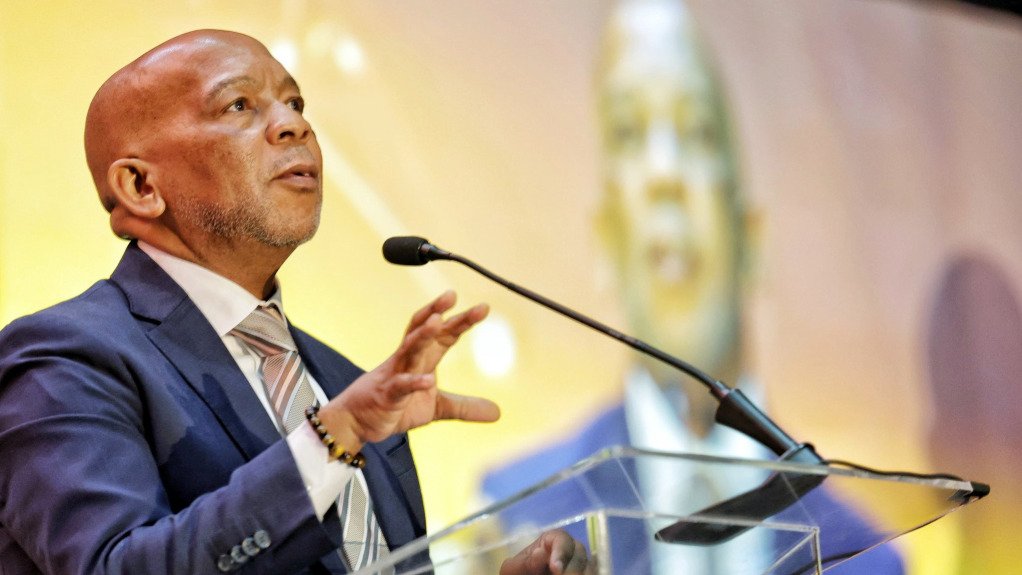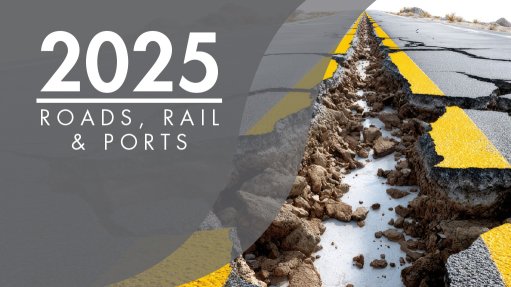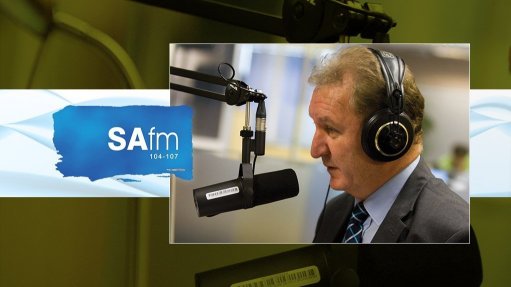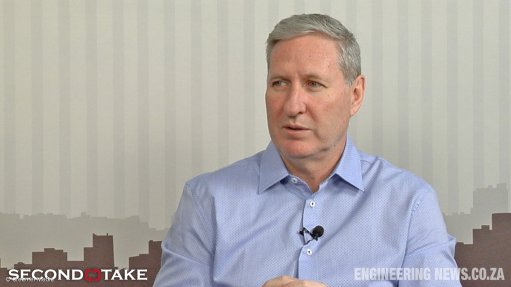Grid and regulatory hurdles stand in way of Ramokgopa’s ‘ultra-aggressive’ renewables vision
Electricity and Energy Minister Dr Kgosientsho Ramokgopa says that government would like to be “ultra-aggressive” in the roll-out of new renewable energy, which he describes as the “future”.
However, key structural constraints, including those relating to grid capacity and regulation, had to be cleared to increase the pace of deployment and to ensure that the credibility of the public procurement process in particular was restored.
Addressing a renewable-energy seminar in Gauteng, the Minister acknowledged that South Africa’s public system for procuring renewables capacity from independent power producers (IPPs) – which had been much-lauded when it was initiated in 2011 – was in urgent need of review.
This, owing to recent failures of bid windows to procure new wind capacity in particular, as well as changes in the market that made it possible for private IPP projects of any size to proceed without a licence.
“As part of our quest to ensure that we see the exponential rise of renewables as part of the energy mix, we are going to be a bit more aggressive in onboarding renewables.
“But I think that statement is hollow if we are not able to address … the inherent weaknesses in the system,” he said at the gathering, convened to allow practitioners in the renewables sector to outline the hurdles to higher levels of investment and propose possible solutions.
Across the board, South Africa’s underinvestment in grid infrastructure, together with a cumbersome grid-allocation system and outdated regulatory processes, were highlighted as key obstacles to any acceleration.
IPP Office head Bernard Magoro said the public procurement of renewable IPPs had yielded R272-billion-worth of investment since 2011, while the 6 300-MW fleet of operating wind and solar plants procured since that date were currently contributing about 10% of South Africa’s electricity.
PROTRACTED PROCESSES
However, the procurement process had become protracted, largely owing to the time it took for bidders to secure grid-connection cost estimate letters (CELs) from Eskom and preferred bidders to gain the grid-connection budget quotes (BQs) needed before construction could begin.
“We need to firm up our allocation rules,” Magoro said, describing as a good first step the prevailing Interim Grid Capacity Allocation Rules, which shifted such allocations from the ‘first come, first served’ model used previously to ‘first ready, first served’.
“[But] we need to finalise that process and get rules that make the process much more seamless and faster.”
South African Independent Power Producer Association chairperson Brian Day argued that CELs and BQs, which were currently only being issued after IPPs had secured all their other regulatory approvals, should be processed in “parallel rather than in series” so as to derisk the development process and speed up implementation.
In the short-term, however, Day saw curtailment as the key instrument for unlocking much-needed grid capacity, especially in the renewables-rich Northern, Eastern and Western Cape provinces, but noted that the National Energy Regulator of South Africa (Nersa) had still not approved the curtailment framework.
He argued that the delay was symptomatic of larger problems at Nersa, which Day said was struggling to keep pace with the rapid changes under way in the electricity sector and had become a “huge bottleneck”.
In the medium term, the grid constraint could be eased by the National Transmission Company of South Africa’s (NTCSA's) decision to begin using turnkey contracting to deliver new grid capacity.
Nevertheless, the longer-term solution would probably depend on government developing a model to open up the sector for Independent Power Transmission (IPT) projects, without which it was unlikely that NTCSA alone could deliver the grid infrastructure required to facilitate the connection of the new renewable generators needed to replace the aged coal fleet.
UPDATED TRANSMISSION DEVELOPMENT PLAN
NTCSA interim CEO Segomoco Scheppers made no reference in his address to either the NTCSA’s own investment plans or to prospects for the integration of IPTs, saying only that it would be releasing an updated version of the Transmission Development Plan at the end of October.
The current plan, which could cost about R390-billion to implement, envisages the roll-out of 14 000 km of new powerlines by 2032, along with new substation infrastructure. However, Eskom only built 74 km last year and has plans to add only 800 km more over the next three years.
Scheppers also stressed the importance of the NTCSA being granted ringfenced revenue by Nersa following its adjudication of Eskom Holdings’ controversial allowable revenue application, which would result in tariffs rising by 36% on April 1 in the unlikely scenario of it being granted in full.
INDEPENDENT POWER TRANSMISSION?
Nedbank energy finance head Amith Singh said there was market appetite to fund IPTs, which could be funded through the limited recourse project financing model used for IPPs, underpinned by contracted cash flows.
He indicated that the banks had been studying international examples and could possibly even be comfortable funding projects of a relatively short term of 15 years before being transferred back to the NTCSA.
There had been no decision yet on what model South Africa could adopt, but such projects internationally typically have terms of between 25 and 30 years.
It has been confirmed, however, that the National Treasury is working with the World Bank’s Multilateral Investment Guarantee Agency on a ‘credit guarantee vehicle’ that would provide guarantees without reference to government’s balance sheet.
Singh also urged policymakers to view public and private procurement as complementary rather than competitive.
“When the private companies buy these power purchase agreements, they give their own balance sheets as guarantees, and that really helps government to use guarantees that would have been needed for public IPP procurement for other programmes.”
Pele Green Energy executive director Gqi Raoleka argued that the grid roll-out could play an important role in reviving South Africa’s construction industry, which needed to be rebuilt and widened to more black-owned contractors.
However, he also expressed concern about the current capacity of the industry to deliver, following what had been a damaging and protracted slump.
Raoleka also appealed for government to show flexibility for black economic empowerment equity investors, which needed to diversify their sources of funding to continue to grow.
Enertrag head of development Mercia Grimbeeck saw consistent procurement as key to rebuilding the credibility of the public procurement programme and in stimulating localisation of the supply chain.
She also called for greater flexibility in the approach to procurement, suggesting that the current grid pressures could be eased by implementing regional procurement, or through programmes that accommodated the colocation of wind and solar PV with battery storage.
Grimbeeck also argued in favour of “faster, smaller roll-outs” rather than mega-scale procurement, which she argued would support project bankability and ensure a more efficient use of resources, from construction to logistics.
Ramokgopa promised the inputs would be taken on board as government sought to accelerate the roll-out of renewables as part of its plan to improve security of supply, support greater affordability and to meet the country’s decarbonisation targets.
Article Enquiry
Email Article
Save Article
Feedback
To advertise email advertising@creamermedia.co.za or click here
Comments
Press Office
Announcements
What's On
Subscribe to improve your user experience...
Option 1 (equivalent of R125 a month):
Receive a weekly copy of Creamer Media's Engineering News & Mining Weekly magazine
(print copy for those in South Africa and e-magazine for those outside of South Africa)
Receive daily email newsletters
Access to full search results
Access archive of magazine back copies
Access to Projects in Progress
Access to ONE Research Report of your choice in PDF format
Option 2 (equivalent of R375 a month):
All benefits from Option 1
PLUS
Access to Creamer Media's Research Channel Africa for ALL Research Reports, in PDF format, on various industrial and mining sectors
including Electricity; Water; Energy Transition; Hydrogen; Roads, Rail and Ports; Coal; Gold; Platinum; Battery Metals; etc.
Already a subscriber?
Forgotten your password?
Receive weekly copy of Creamer Media's Engineering News & Mining Weekly magazine (print copy for those in South Africa and e-magazine for those outside of South Africa)
➕
Recieve daily email newsletters
➕
Access to full search results
➕
Access archive of magazine back copies
➕
Access to Projects in Progress
➕
Access to ONE Research Report of your choice in PDF format
RESEARCH CHANNEL AFRICA
R4500 (equivalent of R375 a month)
SUBSCRIBEAll benefits from Option 1
➕
Access to Creamer Media's Research Channel Africa for ALL Research Reports on various industrial and mining sectors, in PDF format, including on:
Electricity
➕
Water
➕
Energy Transition
➕
Hydrogen
➕
Roads, Rail and Ports
➕
Coal
➕
Gold
➕
Platinum
➕
Battery Metals
➕
etc.
Receive all benefits from Option 1 or Option 2 delivered to numerous people at your company
➕
Multiple User names and Passwords for simultaneous log-ins
➕
Intranet integration access to all in your organisation



















